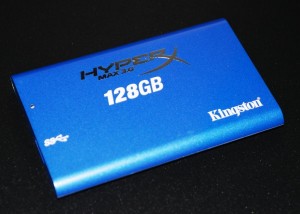
With USB 3.0 now becoming standard in many new laptops and computers alike, we thought it might be an ideal time to review an external USB 3 solid state drive and were fortunate to be offered the opportunity by Kingston Technology.
Our review today will take a close look at the Kingston HyperX Max 3.0 USB 3 SSD and the sample drive sent by Kingston was of the 128GB capacity
INTRODUCTION
The Kingston HyperX Max 3 128GB USB 3 SSD is an external SSD which can only be connected to the computer through its included USB 3 cable. It is fully backwards compatible with USB 2.0 and comes in capacities of 64GB, 128GB and 256GB with prices ranging from $174 for the 64GB to $284 for the 128GB and $624 for the 256GB version of this SSD. On the face, there is a blue light visible when utilized in USB 3 which is seen as green in USB 2.0.
 This may seem to be inconsistent with the price of many of todays similar SSDs but this is not an ordinary SSD that can simply be connected by SATA connector. In fact, the only way to connect the HyperX is through the included USB 3 cable and this drive has a few extra qualities which may merit value to those considering the benefits of external storage.
This may seem to be inconsistent with the price of many of todays similar SSDs but this is not an ordinary SSD that can simply be connected by SATA connector. In fact, the only way to connect the HyperX is through the included USB 3 cable and this drive has a few extra qualities which may merit value to those considering the benefits of external storage.
EXTERIOR PACKAGING
The exterior packaging is very appealing and lists the main selling points of the SSD which are the incredible read and write speeds of 195MB/s and 160MB/s consecutively and the fact that this SSD is shock resistant.
HYPERX MAX 3.0 SSD COMPOSITION
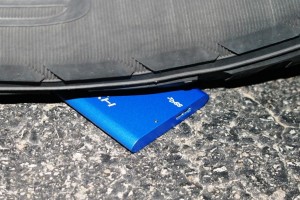 The Kingston HyperX Max 3.0 128GB SSD consists of an exterior casing, USB 3 SATA bridge daughter board and the SSD PCB itself. The exterior case is constructed of solid metal and shaped in such a way that it is virtually indestructible. It felt so solid, in fact, that I even stood on it for a bit before placing it below the front tire of our GMC. It was up and running seconds later.
The Kingston HyperX Max 3.0 128GB SSD consists of an exterior casing, USB 3 SATA bridge daughter board and the SSD PCB itself. The exterior case is constructed of solid metal and shaped in such a way that it is virtually indestructible. It felt so solid, in fact, that I even stood on it for a bit before placing it below the front tire of our GMC. It was up and running seconds later.
Taking the drive apart was no easy task either as the PCB itself is further supported by two sided shock tape which provides almost 1/8″ of absorption between the PCB and exterior wall.
Once apart though, we can see that the USB 3 daughterboard is only held in place by the SSDs SATA interface and can be easily removed.
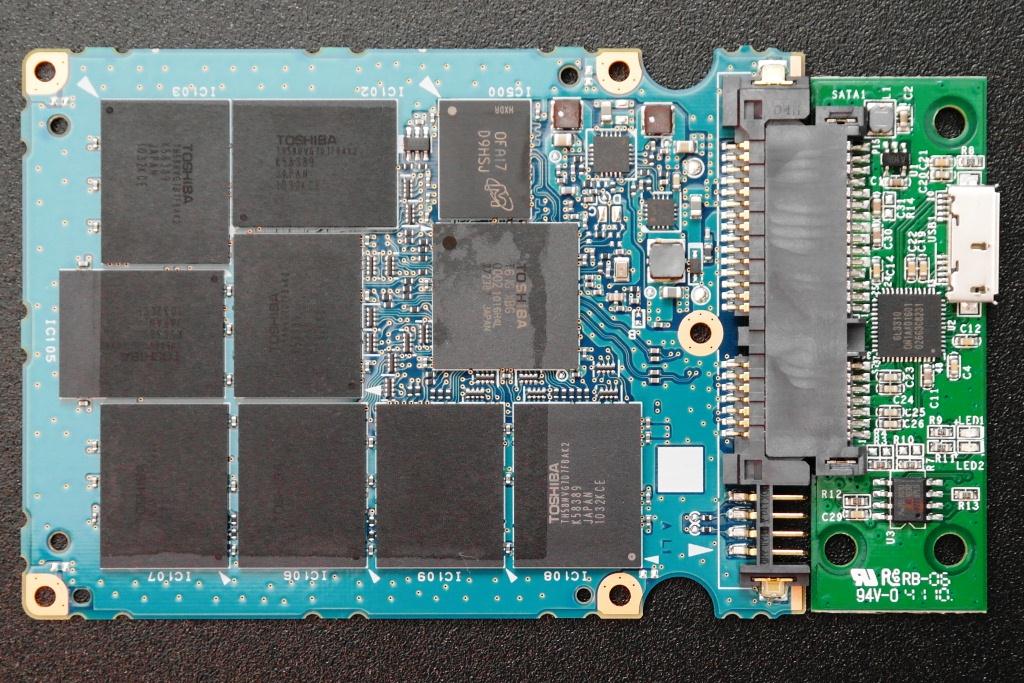 The SSD itself is controlled by the Toshiba T6UG1XBG controller with 16 x 8GB chips of Toshiba TH58NVG7D7FBAK2 mlc NAND for a grand total of 128GB raw capacity. The PCB also contains a Micron 128MB DRAM cache and, once formatted, the SSD shows 119GB capacity available to the user.
The SSD itself is controlled by the Toshiba T6UG1XBG controller with 16 x 8GB chips of Toshiba TH58NVG7D7FBAK2 mlc NAND for a grand total of 128GB raw capacity. The PCB also contains a Micron 128MB DRAM cache and, once formatted, the SSD shows 119GB capacity available to the user.
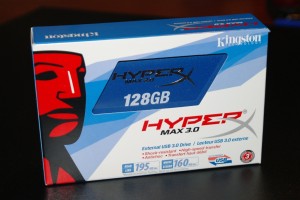
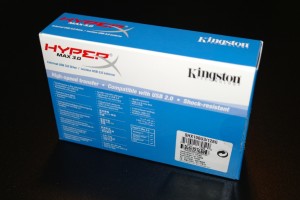
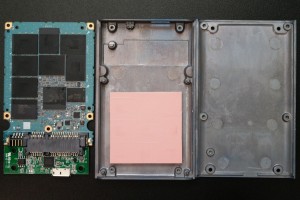
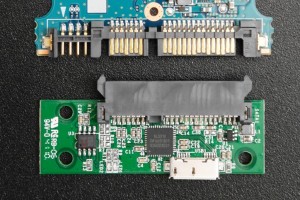
No comments:
Post a Comment